An Epic Star-Guided Voyage
The crew of the Palauan traditional outrigger canoe Alingano Maisu, led by Austronesian master navigator Sesario, relied on ancestral wisdom such as celestial navigation and reading the ocean’s currents to cross over 2,100 kilometers of the Kuroshio Current, eventually arriving at Shanyuan Bay in Taitung. Without using any modern navigation or propulsion systems, the voyage exemplified the seafaring knowledge passed down by Austronesian peoples for generations and symbolized the contemporary rebirth of this millennia-old wisdom. The crew of eleven came from various regions, including Chang Ye-hai Syaman from Lanyu (Orchid Island), jointly embodying a cultural movement that transcends ethnic and national boundaries.
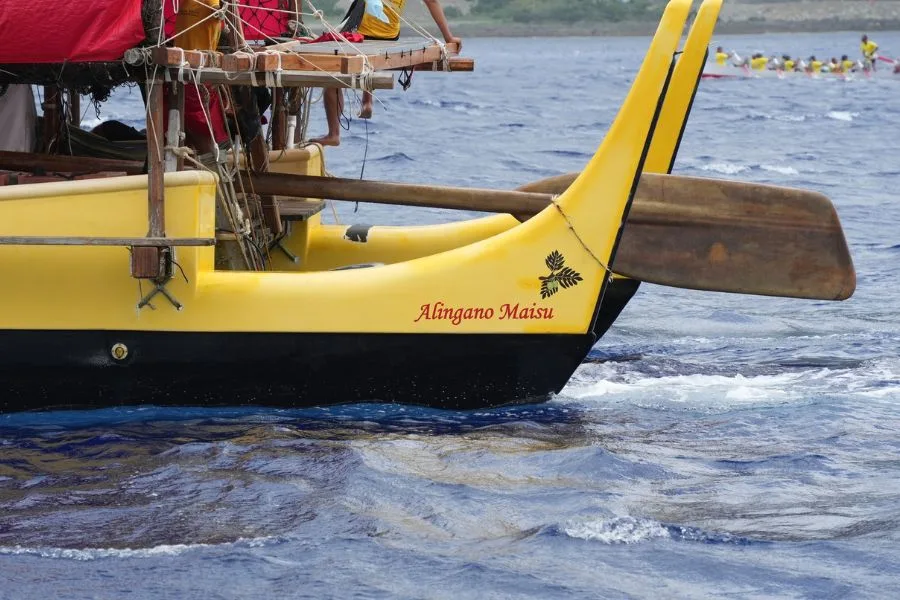
(Photo credit: Taitung County of Indigenous People)

(Photo credit: Taitung County Government)
As the canoe entered Shanyuan Bay, the sound of traditional horns and bamboo cannons from the Citong Tribal Village echoed through the air. Wind Voyagers, the Taitung Sailing School, and the Taiwan Outrigger Canoe Club (TOCC) spontaneously went out to sea to greet the arrival, warmly receiving this cultural celebration symbolizing interethnic connection. This voyage not only left a historical imprint for traditional navigation but also demonstrated the collaborative power of government and civil society working hand in hand.
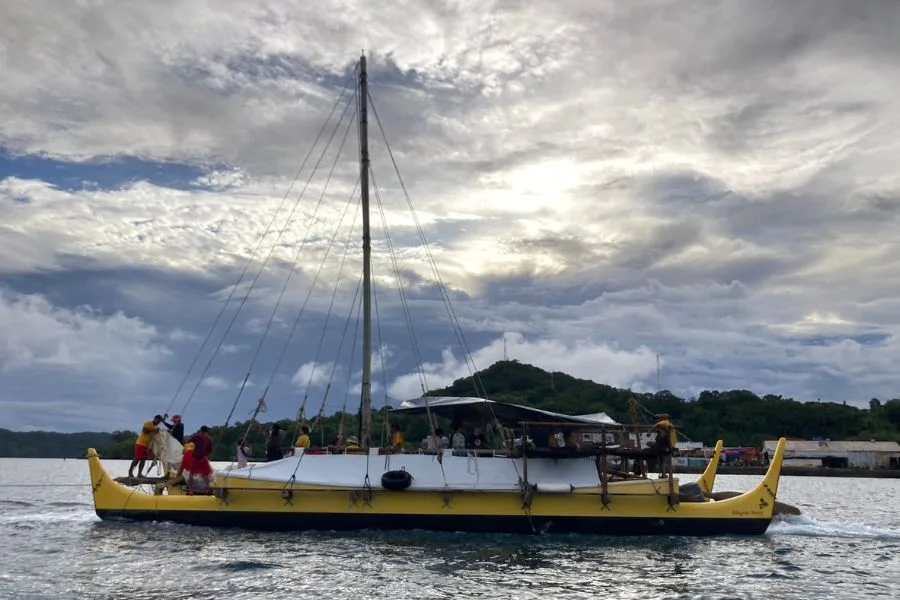
(Photo credit: Taitung County Government)
Modern Practice of Seafaring Wisdom
Alingano Maisu set sail from Palau on April 20, following ancestral routes. Locals gathered at the port to send the canoe off. Two bouts of rain during the departure ritual were seen as blessings from the ancestors, imbuing the journey with sacred meaning. The crew arrived in Lanyu on May 7 for cultural exchanges with the Tao people before continuing on to Shanyuan Bay in Taitung, reviving ancient sea routes in a modern context.
This journey was not only a breakthrough in distance but also a reappearance of cultural beliefs and traditional skills. Fang Ming-tsung, Director of Indigenous Peoples Department of the Taitung County Government, stated that the voyage was a tangible example of transoceanic Austronesian connection and reflected the wisdom of coexistence between humans and nature.
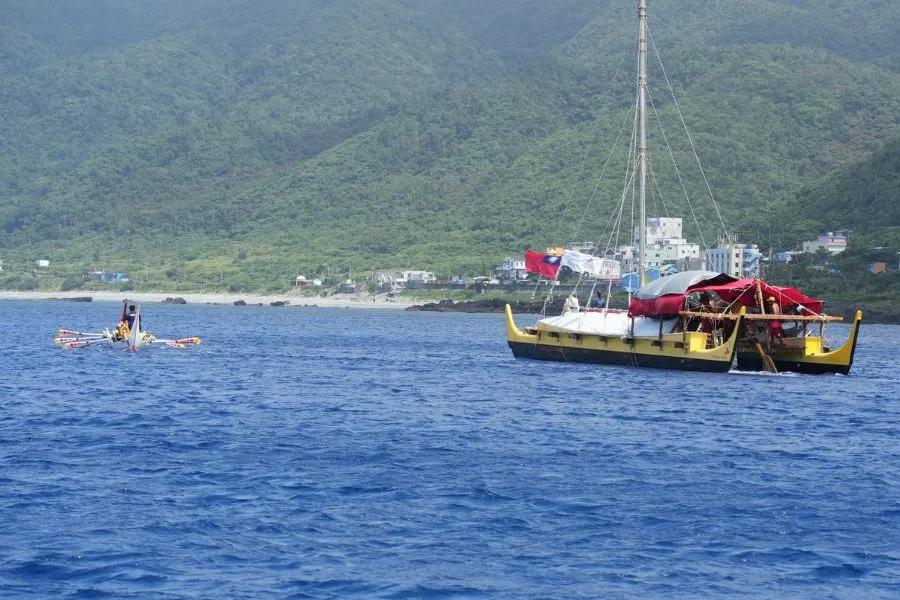
(Photo credit: Taitung County of Indigenous People)
Welcoming Ceremony and Cultural Interweaving
As the canoe landed, a solemn and ceremonial welcome took place on the shore of Taitung. Amis elder Liu Yu-Yi led a blessing ritual; young people transmitted the landing message in traditional fashion, and the Dulan Tribal Village presented a warrior dance performance. Magistrate April Yao stated that this voyage not only revived the Austronesian people’s millennia-old maritime wisdom, but also reinforced Taitung’s role as a cultural hub of Austronesia. She emphasized that Taitung will continue building bridges with other regions to promote maritime cultural exchange.

(Photo credit: Taitung County of Indigenous People)
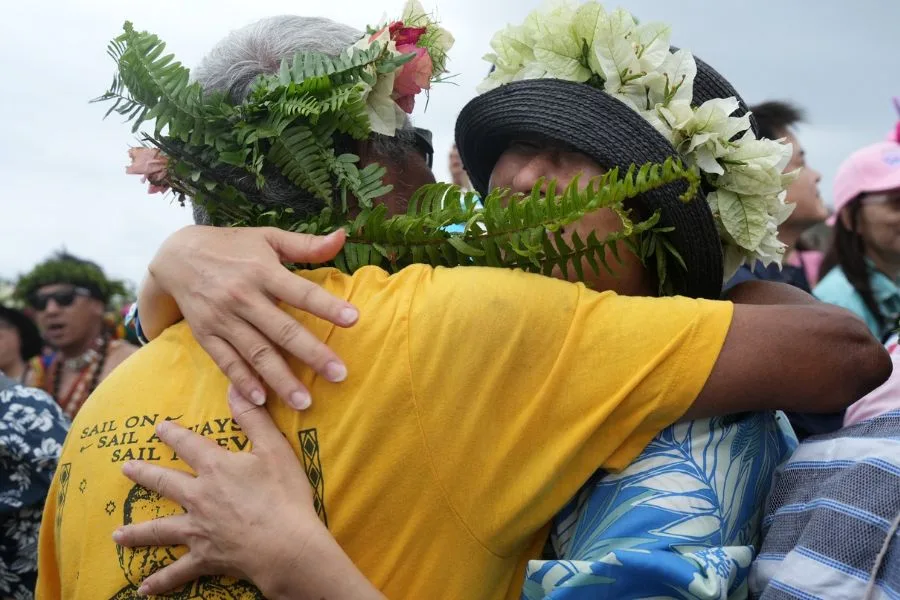
(Photo credit: Taitung County of Indigenous People)
The Maritime Link in Austronesian Diplomacy
Palauan Minister Ngiraibelas Tmetuchl personally came to Taiwan to join the navigators and recalled the process of realizing the sailing dream with Taitung. Representatives of the Micronesian Voyaging Society responded to Taiwan’s warm welcome with traditional chants. Vice Chairman Alan Seid described the visit as “a return to a homeland of a thousand years ago.”
Symbolic gifts representing their shared cultural legacy were exchanged, highlighting the deep historical friendship and mutual understanding between their peoples. Kuan Bi-ling, Minister of the Ocean Affairs Council, remarked that this canoe voyage is a model of traditional knowledge exchange between Taiwan and Palau, transforming the ocean into a bridge linking Austronesian cultures.
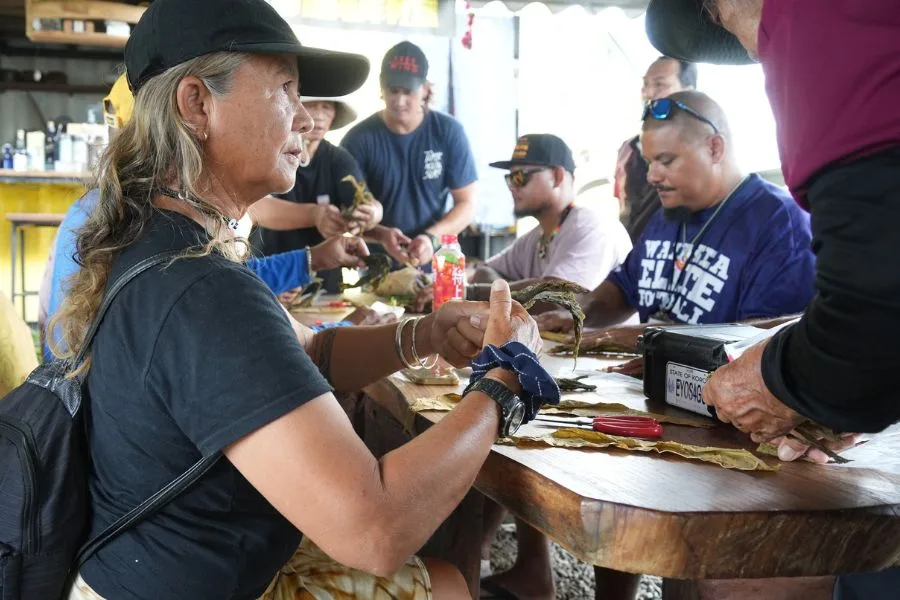
(Photo credit: Taitung County of Indigenous People)
In-Depth Exchange and Future Outlook
After arriving in Taitung, the Palauan crew engaged in a week-long cultural exchange across Indigenous communities, including workshops on shell ginger leaf weaving, betelnut sheath handicrafts, and demonstrations of traditional fishing and hunting techniques. They interacted deeply with the communities of Changbin, Duli, and Dulan, experiencing firsthand the diverse facets of Taiwan’s Indigenous cultures.
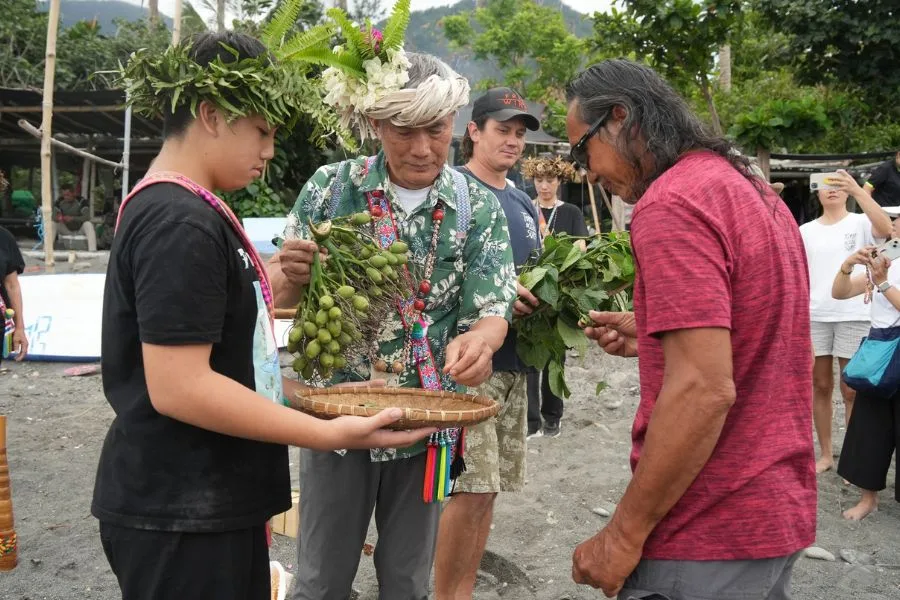
(Photo credit: Taitung County of Indigenous People)
Looking ahead, the Taitung County Government will continue cooperating with Palau, Guam, and others to build a traditional Austronesian canoe representing Taitung by integrating Amis and Tao boatbuilding techniques. Shanyuan Bay will serve as a base for marine education and international cultural exchange. Though Alingano Maisu departed for Palau on May 17, this cultural journey—crossing languages, ethnicities, and borders—has opened a new chapter in Austronesian relations and marked the starting point of a future route to cultural revitalization.




